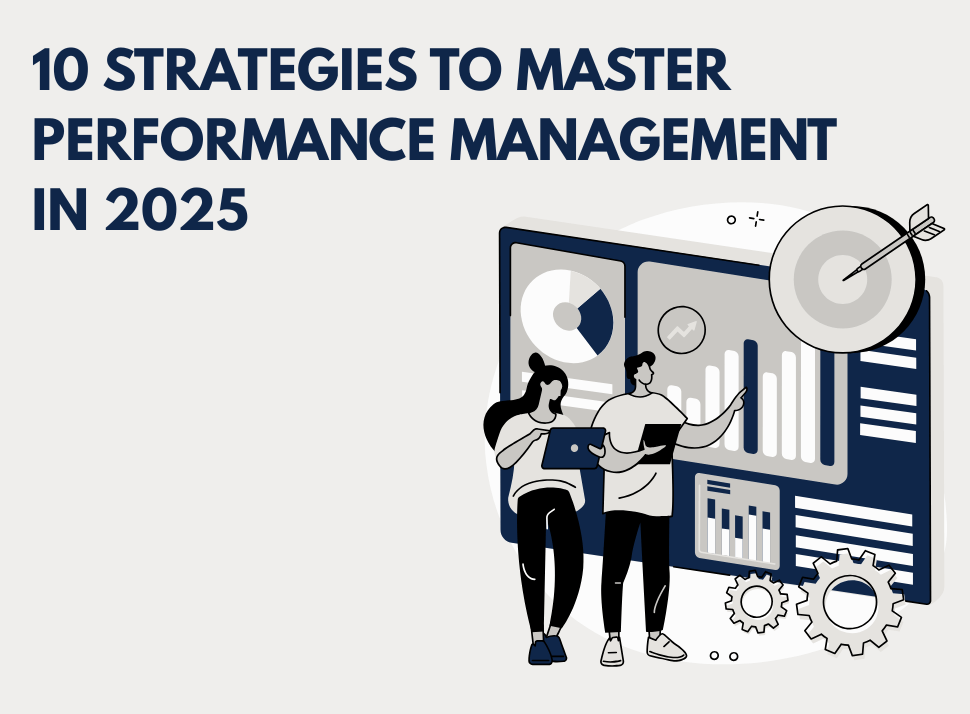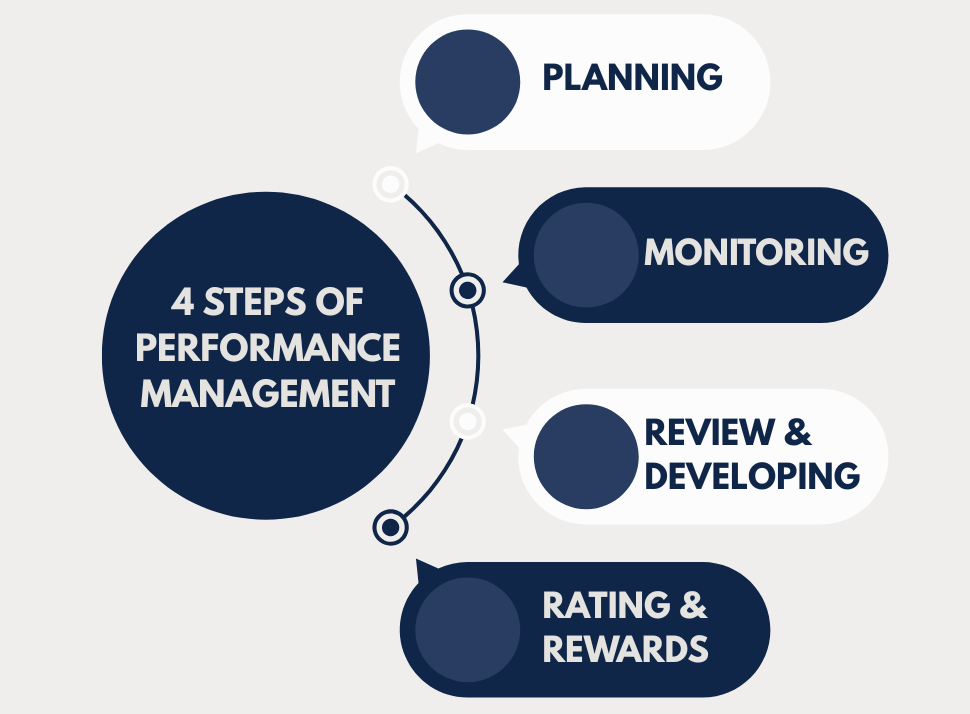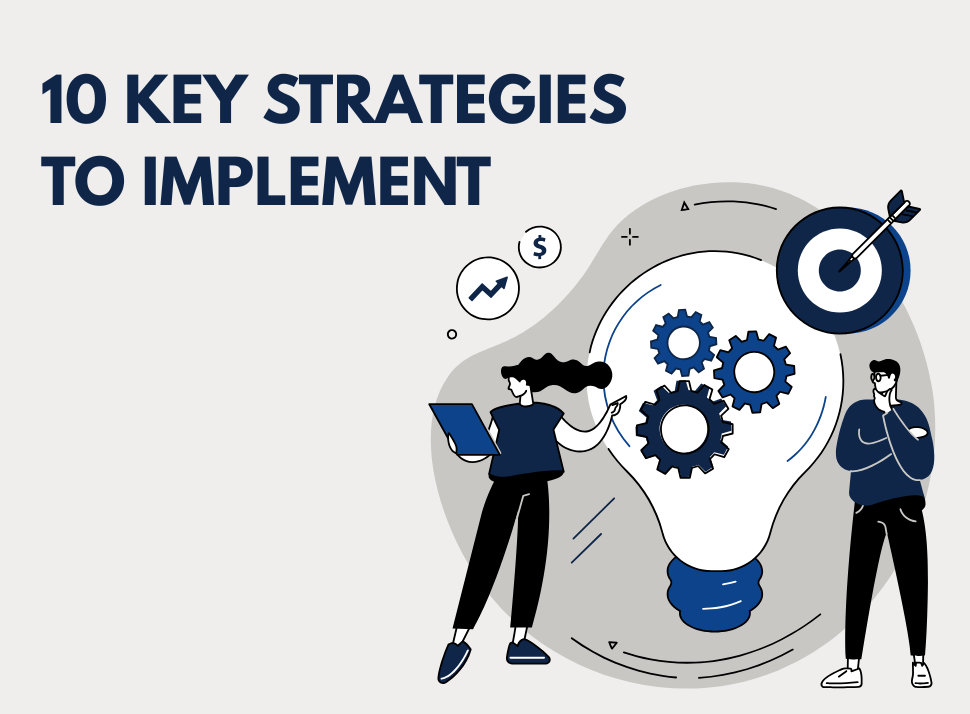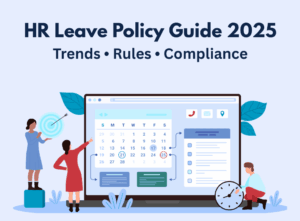Performance management has transitioned away from the traditional model of an annual review to a more continuous and strategic process, given the 2025 business context. Using contemporary performance management practices is critical now more than ever because of the increase in remote work, AI-driven insights, and shifting workforce expectations.
One of the challenges organisations face today is a misalignment of people’s personal aspirations with the goals of the organisation which often leads to missed deadlines and reduced employee engagement. The issue of poor communication, lack of alignment with goals, and inadequate feedback systems can all be mitigated through a strong performance management system.
This manual defines core concepts of performance management and offers ten tangible strategies that will help position your organisation for success in 2025.
Performance Management: What is it?
The systematic practice of aligning employee performance with company goals is generally referred to as performance management. Performance management encompasses goal setting, tracking performance, giving ongoing feedback, and identifying successes. A well-implemented performance management system promotes transparency, accountability, and continuous development.
Today, performance management is a process. This process is adaptable and can change based on shifting business needs and employee growth. Performance management incorporates data analytics, technology, and human-centered approaches to foster performance and growth.
The Four Steps of Performance Management
There are four steps you can take to have a successful process of performance management.
Planning: The first step is to set performance expectations and individual goals that align with the business goals. Use planning frameworks which clearly identify goals and measurable outcomes (e.g., OKRs, SMART goals). Also, ask the employees their opinion for how to make their goals happen.
Monitoring: Monitor on a consistent basis the progress you have made against the goals. By using performance metrics for your monitoring, you will specify what employees have done towards earning a complete or partial reward. Monitoring prepares the way for prompt identification of complications, obstacles, and contingencies, making it easier to support employees where needed and locate additional opportunities to support the individuals.
Developing and Reviewing: Take the time to coach, to mentor, to support learning and development in the form of training to improve these areas. This step works to actively identify skills improvement and training efforts to author skills development, while also identifying performance issues through training opportunities. The regular reviewing of employees’ performance allows for progress and improvement to remain at the forefront of the employees’ thoughts, motivating them to improve.
Rating and Rewards: Evaluate the employee’s performance against the benchmarks established. Rate employee performance and recognize or reward employees with some level of recognition if their performance and achievement are deserving. Determining how to rate employees is the true value in the rating and rewards step, as it will often dictate promotion, pay, or movement in their careers.
Significance of Performance Management Strategies
The importance of effective Performance Management Strategies cannot be overstated. These should be implemented to:
Align employee performance with business goals: To make sure that everyone is working toward the same business goals.
Mitigate performance gaps and underperformance: To find and address underperformance sooner rather than later.
Increase employee engagement and motivation: Employees feel valued when their performance is recognized and rewarded.
Facilitate better decisions based on data: The right Performance Management System will provide more objectivity around promotion, bonus and termination decisions.
Support employee development: Development plans tailored to individual employees can ensure they reach their potential.
10 Performance Management Strategies to Implement in 2025
1. Develop 360-Degree Feedback
Like a reality show, 360-degree feedback has inputs from the managers, peers, subordinates, and even clients.
The goal is to get a holistic picture of the employee’s performance and behavioral competencies.
- Helps highlight self-awareness and accountability.
- Reduces the bias of managers decisions.
- Dialogue can lead to the positive development of teams.
2. Utilize goal-setting frameworks
Goal-setting frameworks, such as OKR or SMART goals, are beneficial to ensure that everybody is aligned and working from the same playbook.
- Goals provide clarity about objectives, while key results provide clarity about what will be measured.
- Helps develop enhanced focus and clarity to achieve the work.
- Encourages alignment across the department.
3. Create Individualized Employee Development Plans
Employees have different aspirations and different learning styles
As a result, individualized development plans help to better capture the experience of employees.
- Identifying strengths, skills gaps, and potential pathways as careers develop.
- Includes formal training sessions, informal mentors, job rotations, and job shadows.
- Creates a continuous learning culture.
4. Conduct Performance Reviews Consistently
Annual performance reviews can be sporadic. Instead, simply scheduling performance review discussions monthly or quarterly can make a tremendous impact.
Sometimes it is just about the practice of discussing performance, rather than expecting everyone to perform perfectly for 12 months
- Use the meetings to reset goals, reiterate the company values, and vision/mission statements.
- Creates engagement with employees, and performance takes on a different level of clarity and feedback.
5. Create Timely Recognition and Rewards
There are many simple things that an organization and its employees can implement to create high morale, better retention, and a strong performance culture. Employees respond to timely recognition!
- Implement employee/ peer/ manager awarded and nominated awards and shout-outs, and recognise and celebrate the performers publicly.
- Recognise things with measurable results and not effort, as that can lead to mediocrity and complacency.
- Create a strong level of competition.
6. Use a Performance Management System
Performance Management Systems of today are automated processes and usually ingest performance records into a central place.
- Supports goal-setting, a feedback system of ongoing and appraisal workflows.
- Provides a more comprehensive picture of performance reporting and data-backed sightings.
- Increases transparency and accountability for all teams.
7. Create a Culture of Continuous Feedback
Continuous feedback provides an opportunity to address situations before they evolve too far and supports a chronic reinforcement of the right behavior
- Advance casual feedback in the form of 1:1s and team reflections
- Provide some training for managers on how to provide feedback to create a positive behavior pool
- Build trust to create open communication
8. Align Performance Metrics and Business Objectives
Make sure your team’s KPIs and overall performance metrics directly reflect the company’s priorities.
- Do not measure vanity metrics, move towards metrics that actually change the business.
- Be agile with the metrics, as company priorities can change
- Align each company priority with the performance metrics organizationally from management down to entry-level.
9. Utilize a Coaching and Mentoring Program
Explore the possibility of budget-friendly internal coaching development, or appoint a guided, experienced mentor to help grow your team’s capabilities to sustain performance delivery.
- A coaching program can help the new hire time to ramp up.
- Opportunities to share knowledge throughout the business and develop a leadership pipeline.
- Development ranging from individual or team level improves the loyalty of all employees long term.
10. Evaluate Your Performance Management Program and Iterate
Make the time to develop your performance management outcomes in a regular schedule, making time to evolve and adjust has its benefits.
- Gather information/feedback from both employees and managers.
- Consider additional methods to surround the data such as metrics like goal completion rates, turnover, and engagement metrics.
- Make easy and small adjustments in an iterative fashion for each outcome.
Best Practices for Creating a Performance Management Strategy
Creating a strategy is not a one-and-done exercise. It is a collaborative and developmental process. If you want to create an effective plan, consider the following:
Involve all stakeholders: Involve HR, line leaders and front-line workers.
Be consistent in culture: Have your strategy be aligned with your values and mission.
Be explicit about expectations: Use onboarding, internal pamphlets, and training courses to create clarity.
Use the right tools: Use a robust Performance Management System that helps you do what you are trying to do.
Track the plan and adjust over time: Create a discipline of evaluating and improving the performance management process at least every 6–12 months.
Shaping Tomorrow’s Workforce with Smarter Performance Management
By implementing the above 10 effective Performance Management Strategies for 2025, your company will be better equipped to retain talent, be more productive, and attain long-term goals. Having a defined performance management process points to a company that is proactive and has a culture of empowerment, where feedback is encouraged and achievements are recognized.
As the nature of work continues to evolve, building agility and alignment into your Performance Management System, and helping you stay competitive, efficient and ready for the future.




